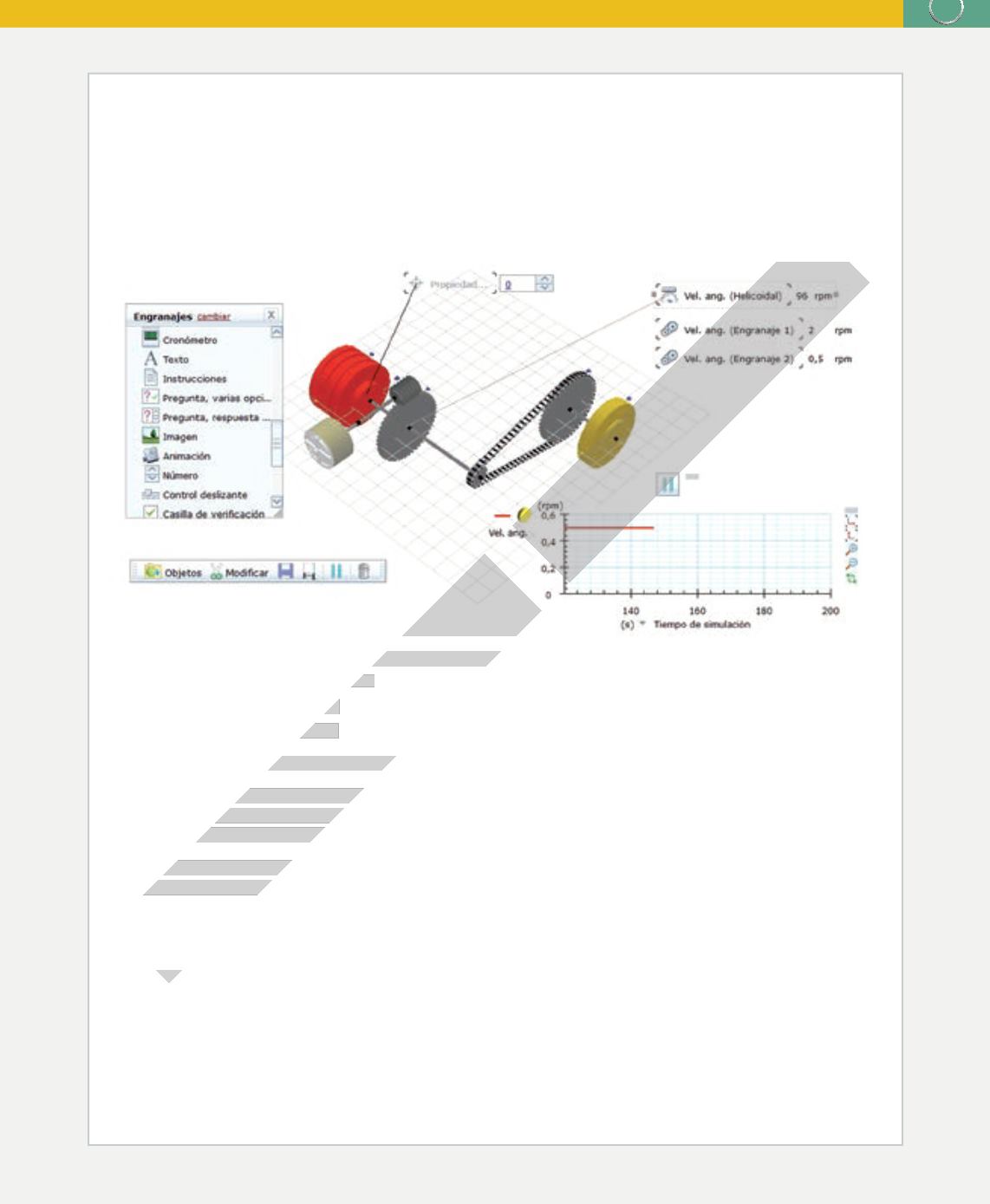
125
3. La madera y sus derivados
5. Mechanism
b) Presentation
After you design your mechanism, you can add other elements, such as numbers and graphics, with information about
the components and their properties (rotation speed, acceleration, number of gear teeth, etc.).
1.
Select an element, such as a number.
2.
Drag the target icon to the correct component.
3.
Select the property that you want to describe.
41.
Study the image on this page. Explain how the mechanism works. How does it transmit motion? Which
elements are connected? Which ones rotate at the same speed? Does this speed increase or decrease?
42.
Use the information about the speeds of the various parts. If gear 1 has got twelve teeth, how many teeth
has the worm drive got? How many has gear 2 got?
43.
Use the simulator to reproduce the three bicycle gear combinations that you use most often. You can do
this with a motor and a chain drive, and experiment with the characteristics of different gears.
44.
Add numbers, explanatory texts and images to your diagram to make it the part you want to explain in
the final task.
In this image, you see the speeds if the moving parts in revolutions per minute (rpm).
❚❚
The motor and the shaft attached to it.
❚❚
The smaller gear in the gear train.
❚❚
The larger gear in the chain drive.
The wormscrew transmits motion to the small gear, so they have the same speed.
How fast do they rotate?
The graphics show how this property changes over time. It’s interesting to see what happens when you change the
sizes of different parts. In this image, you can see the change in speed of the yellow wheel over time. It’s constant since
none of the variables of the system have changed during the time period.
You can also add activation buttons, sliding controls, text notes, images and animations, as well as questions and answers.
In this way, you can create exercises, exam tasks, explanations with diagrams, etc.
www
ADVANCE EDITION


